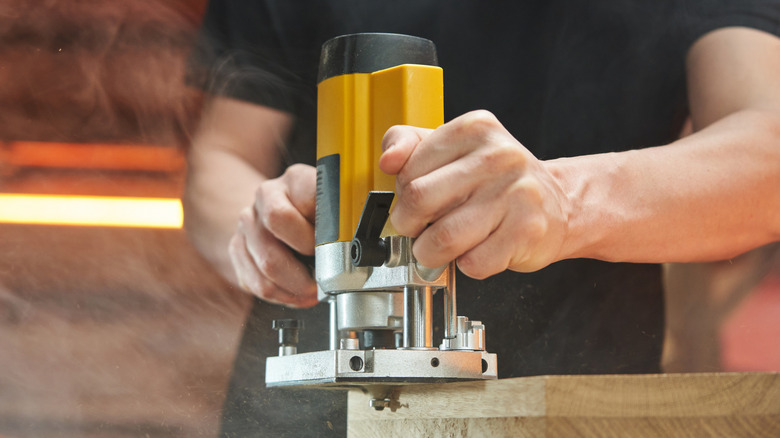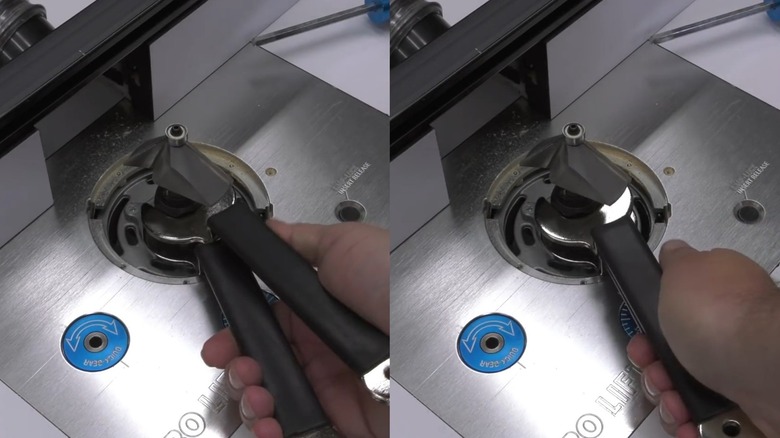Are Woodworking Routers Dangerous? What To Know Before Cutting
We may receive a commission on purchases made from links.
The wood router is a versatile tool that allows you to create a variety of joints, decorative edges, and grooves, as well as carve complex designs into wood. However, it can also be a bit intimidating for beginners. One new woodworking hobbyist (via Reddit) explained, "for whatever reason [I'm] concerned when thinking of using a router. I haven't purchased one yet solely out of fear."
Unfortunately, the truth is that nearly any tool used improperly or recklessly could be considered dangerous. Some older examples, like the radial arm saw, can be particularly unsafe, placing them in a group of tools you never use and can probably get rid of. There are several different types of wood routers that range from handheld models to router tables, and no matter which version you use, there are some steps you can take to make sure your next wood router project is a safe one.
Wear safety equipment
According to the US Bureau of Labor, in 2020, full-time workers experienced 11,980 incidents involving eye injuries due to contact with debris or equipment. Safety glasses are vital even for weekend warriors, especially when using a wood router. One of the factors that makes this particular tool daunting is that routers typically spin between 8,000 and 24,000 revolutions per minute. A good pair of performance safety glasses can protect your eyes from flying debris, and they are just one of several Milwaukee finds under $20 that are actually worth buying, according to reviews.
Another protective piece of equipment you'll need when using a router is something like the ProCase Noise Reduction Ear Muffs, which offer a noise reduction rating (NRR) of 28 decibels. The average router can put out around 95 decibels of noise while running. Prolonged exposure to sound levels between 85 and 90 decibels can result in long-term hearing damage.
Properly tighten the bit into place and always unplug the tool when adjusting
With any tool that uses bits, it's crucial to make sure it is properly secured before using it. Those who are concerned about operating a wood router may have heard horror stories about a loose bit flying out of the tool during use. One beginner (via Reddit) explained their trouble with a bit, "The first time I used it [the bit] flew out and got stuck in the wood. Now I'm terrified to use it again." In order to avoid this, you'll need to properly tighten the collet (the router part that pinches down on the bit) so the bit is held firmly in place. Many routers require two wrenches to secure the bit, and simply squeezing them together should be tight enough. You don't want to overtighten, as it could damage the collet.
Obviously, one of the most significant risks with a wood router is the bit coming into contact with your fingers. One of the ways this can occur is not actually during cutting, but when adjusting or swapping out the bit. Fortunately, there is an easy way to prevent the tool from accidentally powering on, and that's to unplug it. While it may not be as convenient to unplug the tool every time you make adjustments, it's worth it to avoid finger and hand injuries. But remember to verify the router is turned off before you plug it back in.


